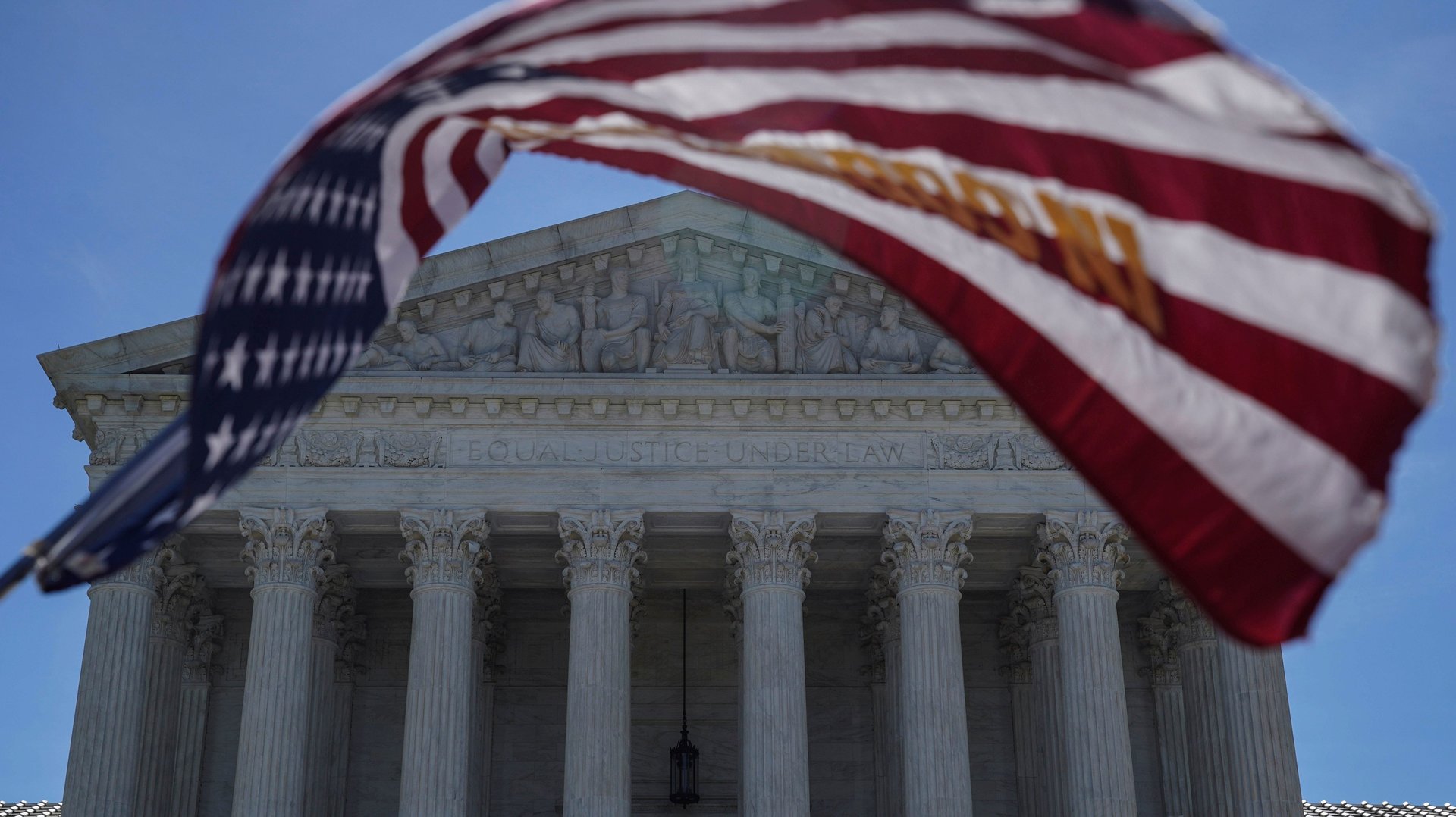The surprisingly low standard the Supreme Court used to review Trump’s travel ban
The US Supreme Court spelled out what it takes for Donald Trump to take full advantage of his broad powers on immigration policy.


The US Supreme Court spelled out what it takes for Donald Trump to take full advantage of his broad powers on immigration policy.
It wasn’t a lot.
In a 5-4 vote, the court upheld the Trump administration’s ban on visitors from five Muslim-majority countries—plus North Korea and some Venezuelans—giving Trump one of the biggest victories of his term.
The lead plaintiff, the state of Hawaii, had argued the travel ban exceeded the president’s powers because it overrode laws to deal with the very same problem Trump was trying to solve: unreliable information on foreign travelers from the seven targeted countries. Opponents also argued the president’s real intention was to discriminate on the basis of religion, offering Trump’s tweets about a Muslim ban as evidence.
The majority of justices found that the president’s travel ban is “squarely within the scope of presidential authority.” Their 39-page opinion issued today (June 26) draws a blueprint for how Trump could come up with lawsuit-proof policies to bar all citizens from other countries. One potential target: the Central American migrants he has been trying to block at the border.
Here is what the court established in its ruling:
Legal certainty for the extent of presidential power
The president already had broad authority under immigration law. Under the Immigration and Nationality Act, the president can ban foreigners if he can “find” that letting them in “would be detrimental to the interests of the United States.”
The first two versions of the travel ban had raised many questions of how far he could stretch that authority and in what circumstances. Both, as well as the third iteration upheld by the Supreme Court Tuesday, were shot down by the courts.
That uncertainty has now been eliminated by the Supreme Court.
A president can tweet with apparent impunity
Trump’s combative tweets didn’t matter, the majority suggested, because the anti-Muslim sentiments espoused in them were nowhere to be found in the executive order implementing the ban.
“The Proclamation is expressly premised on legitimate purposes: preventing entry of nationals who cannot be adequately vetted and inducing other nations to improve their practices. The text says nothing about religion,” it wrote.
That gives Trump’s license to be as discriminatory as he wants in his tweets—as long as his policies avoid that same language.
An executive order can be used to justify itself
The majority gave a good indication of where it draws the line on the legitimacy of Trump’s actions under immigration law.
To meet the court’s requirments in the future, the Trump administration can reproduce the process it spelled out in the 12-page executive order. It included seemingly run-of-the-mill government activities such as reviews and consultations between the Department of Homeland Security and various agencies, setting criteria that foreign governments must meet, and carrying out risk assessments.
That was enough for the majority, which remarked that the document was the most detailed presidential order ever issued under the immigration law that the plaintiffs said the ban violated. “The Proclamation reflects the results of a worldwide review process undertaken by multiple cabinet officials and their agencies,” the ruling said.
The cause is less important than the effect
The court decided not to look very deeply into the administration’s motivations. The extent of its review of the policy was to determine whether it “plausibly related to the Government’s stated objective to protect the country and improve vetting processes.”
Courts usually apply that level of scrutiny, known as “rational basis review,” to government policies that don’t appear to be anywhere near violating a person’s fundamental rights, says Carolyn Shapiro, co-director of the Institute on the Supreme Court of the United States at the Illinois Institute of Technology. For example, that would be sufficient for a lawsuit challenging a state policy that grants drivers licenses to people 16 years and older. A policy that appears to be discriminatory, for example, one that granted licenses to women at 16 and men at 17, would require a higher level of scrutiny, she says.
Under rational basis review, “it’s pretty easy to defend almost any government action,” she adds.
Furthermore, justice Anthony Kennedy, who voted with the majority, said that courts don’t always have the authority to weigh in on the constitutionality of government policies. He suggested that the administration police itself to ensure it doesn’t violate the Constitution.
“The very fact that an official may have broad discretion, discretion free from judicial scrutiny, makes it all the more imperative for him or her to adhere to the Constitution and to its meaning and its promise,” he wrote.
The new bar set by the Supreme Court is still an improvement over the previous versions of the travel ban, according to Neal Katyal, the plaintiffs’ lawyer.
“While we continue to believe that this third version fails that test, there is no question that by striking down the first two travel bans, the judiciary forced a recalcitrant administration to at least give its order the veil of constitutionality,” he said in a statement.